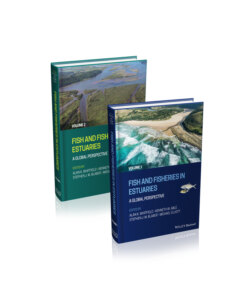Читать книгу Fish and Fisheries in Estuaries - Группа авторов - Страница 13
Оглавление
Preface
Throughout the world, estuaries are perhaps the type of water body most intimately associated with humans. The reasons for this have been stated often but emphasize sites for harbours, fishing, industrial, and residential development. In addition, since all estuaries represent a meeting place between river and sea, the availability of catchment freshwater supplies are vital for developing and maintaining life in and around these systems.
Coastal communities by their very nature have strong maritime traditions, with estuaries giving ready access to the sea and have therefore been important in human history. Consequently, it is no surprise that many of the world’s megacities have developed on estuaries, with residents frequently identifying themselves in relation to their estuary. Our close connection with estuaries has also led to a great deal of interest in the fish stocks, both for food and pleasure – for exploitation, commercial and recreational, and for aesthetic reasons.
However, the importance of estuaries and coasts has also given rise to what we are calling ‘the triple whammy’ – the increase in industrialisation and urbanisation, the increased use of resources such as food, space and water, and the decreased resistance and resilience to global events such as climate change. Indeed, climate change and the accompanying sea‐level rise is already starting to have major impacts on estuaries, fishes and people living along the coast. This close association, particularly in relation with food security and burgeoning human populations, has therefore given urgent impetus to research into maintaining the viability of fish populations in the face of both fishing and other pressures, especially habitat degradation.
The widespread recognition of the value of biodiversity, enshrined in a number of international treaties (e.g. the 1992 Convention on Biodiversity) to which most countries are signatories, has encouraged the documentation of the very diverse estuarine fish faunas, as well as the setting up of protected areas, driving rehabilitation, and the enactment of conservation laws. From a research perspective, the emphasis has shifted from the vitally important tasks of documenting estuarine fish faunas, as well as their often unique biology and life histories, to trying to ameliorate or at least record, all the negative anthropogenic effects on the fishes and their environment, and to achieve a balance between exploitation and conservation. We have learnt that we need to understand not only the structure of the systems but especially the functioning. Perhaps more than other ecosystems, in order to understand and protect estuaries, we need to consider connectivity and what happens in the adjoining areas at sea and in freshwaters. To reach this balance, a good understanding of the fishes and all their interrelationships, including that with humans, are obviously required.
This book seeks to document all aspects of fishes in estuaries from a global perspective. Its genesis was about 10 years ago when Wiley Blackwell, the publishers of two books on tropical and temperate estuarine fishes, suggested that the authors get together and produce an overall volume. Given the rapid increases in knowledge, it was soon realised that this task required a larger multi‐author and multi‐national approach than the previous volumes, and by involving estuarine ichthyological specialists from many fields. Hence, the present volume – which consists of 13 chapters plus 2 appendices, representing the best efforts of 52 authors to bring together in one book our current state of knowledge of the fish and fisheries in the myriad of estuaries throughout the world.
Alan Whitfield, South Africa
Ken Able, USA
Steve Blaber, Australia
Mike Elliott, UK
